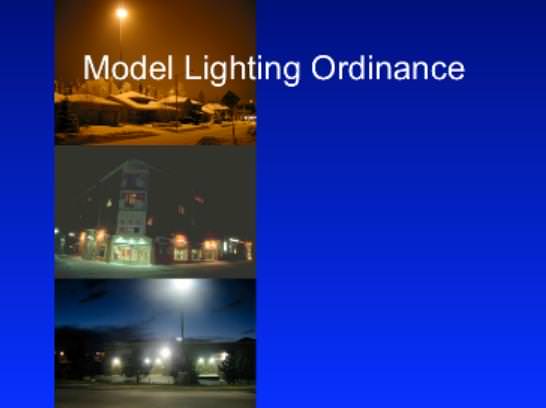[/caption]
For every astronomer everywhere – and even naturalists – the need to preserve dark skies has been an issue tackled by the International Dark Skies Association for over two decades. It’s more than just asking your neighbor to turn off their porch light while you’re observing. It’s about light pollution as a whole – from government to community lighting. In the past the IDA has relied on education, but now things could be getting a whole lot better.
“IDA and the Illuminating Engineering Society (IES) proudly announce public release of the Model Lighting Ordinance (MLO) as a valuable guide for environmentally responsible outdoor lighting in North America.” says the organization. “Developed jointly by the IDA and the IES over a period of seven years, the IDA/IES partnership will encourage broad adoption of comprehensive outdoor lighting ordinances without devoting extensive staff time and resources to their development.”
In a time of budget cuts and pressure on volunteer time, such programs like the MLO are absolutely invaluable. This guide will enable communities to make responsible decisions about outdoor lighting standards… effectively reducing glare, light trespass, and skyglow. Studies have shown these three culprits of light pollution wreak havoc on more than just astronomy – it affects our own human biorhythms, wildlife and more. By having a standard that’s easy and cost effective to follow, things can be changed.
“The MLO offers several innovations to outdoor lighting regulation, including the use of five lighting zones to classify land use with appropriate lighting levels for each. Zones range from LZ0, designed for pristine natural environments and limited outdoor lighting, to LZ4, for limited application in areas of extensive development in the largest cities. The second innovation limits the amount of light used for each property.” says the group. “Third, the MLO uses the IES’s new TM-15 -11 “BUG” (Backlight, Uplight and Glare) classification of outdoor lighting fixtures to ensure that only well-shielded fixtures are used. No uplight for area and street lighting is allowed in any zone. The MLO will be revised on a regular basis to include new information, feedback from municipalities using it and changes to IES standards.”
Will these new guidelines be adopted by government and industry? You might be surprised at just how well concepts of this type can be accepted when you can show how they are not only cost effective, but energy saving as well. Not everyone around the world reacts in a negative way when asked to cut lighting – especially when they realize a group is tackling major concerns such as security and safety.
Bob Parks, executive director of IDA, hopes for widespread application. “The MLO will give communities the tool they need to control outdoor lighting and the assurance that the outcome will meet the international standards developed by the IES,” states Parks. “The MLO will accelerate adoption of quality outdoor lighting practices in municipalities of all sizes and show planners how to improve the quality of outdoor lighting while saving energy and reducing operating cost.”
Robert Horner, director of public policy for the IES, expresses similar expectations, stating, “The IES is proud to have produced, in partnership with the IDA, the first Model Lighting Ordnance. This will give states and municipalities the ability to enact effective outdoor lighting legislation and codes, while maintaining the necessary lighting quality for a safe and secure lighted environment and meeting all relevant IES standards and practices.”
In the meantime, get involved with your community and the IDA. Our dark skies future starts with you…
Original Story Source: International Dark Sky Association and Model Lighting Ordinance.


This is good. I live in the suburbs and the light pollution here is absolutely godawful. I can only see stars in half the sky and even then I can barely see the ones that aren’t obscured in that horrible golden glow.
Light pollution is the stealth form of pollution that most people ignore. It is also the only form of pollution that can be fairly easily corrected. People need to shield their lights (full-cutoff) so that the beam goes down on the ground where it can actually help people see, not up in the sky. Improper lighter wastes vital energy, creates glare that actually makes it harder to see, interferes with bird migration and casts this sickening pink glow that obscures the beauty of the night sky.
Light pollution is the stealth form of pollution that most people ignore. It is also the only form of pollution that can be fairly easily corrected. People need to shield their lights (full-cutoff) so that the beam goes down on the ground where it can actually help people see, not up in the sky. Improper lighter wastes vital energy, creates glare that actually makes it harder to see, interferes with bird migration and casts this sickening pink glow that obscures the beauty of the night sky.
The MLO does not go near far enough while they had the chance to correct light pollution. The intent is there, but not the teeth.
All pictures are so amazing and the information you given in this description is also unbelievable.
Thanks for sharing such a amazing blog.
indoor lights
All pictures are so amazing and the information you given in this description is also unbelievable.
Thanks for sharing such a amazing blog.
indoor lights